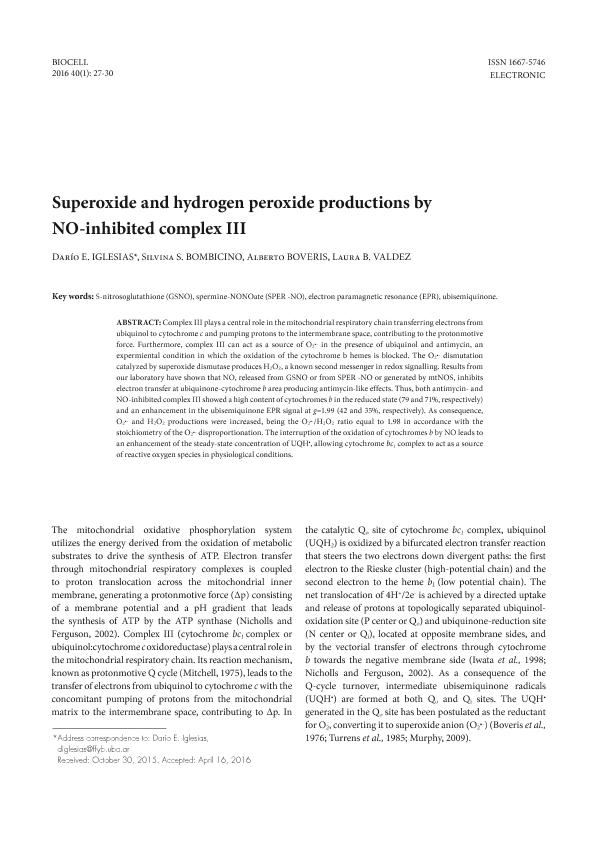Artículo
Superoxide and hydrogen peroxide productions by NO-inhibited complex III
Fecha de publicación:
04/2016
Editorial:
Sociedad Latinoamericana de Microscopía Electrónica; Centro Regional de Investigaciones Científicas y Tecnológicas
Revista:
Biocell
ISSN:
1667-5746
Idioma:
Inglés
Tipo de recurso:
Artículo publicado
Clasificación temática:
Resumen
Complex III plays a central role in the mitochondrial respiratory chain transferring electrons from ubiquinol to cytochrome c and pumping protons to the intermembrane space, contributing to the protonmotive force. Furthermore, complex III can act as a source of O2 •- in the presence of ubiquinol and antimycin, an expermiental condition in which the oxidation of the cytochrome b hemes is blocked. The O2 •- dismutation catalyzed by superoxide dismutase produces H2O2, a known second messenger in redox signalling. Results from our laboratory have shown that NO, released from GSNO or from SPER -NO or generated by mtNOS, inhibits electron transfer at ubiquinone-cytochrome b area producing antimycin-like effects. Thus, both antimycin- and NO-inhibited complex III showed a high content of cytochromes b in the reduced state (79 and 71%, respectively) and an enhancement in the ubisemiquinone EPR signal at g=1.99 (42 and 35%, respectively). As consequence, O2 •- and H2O2 productions were increased, being the O2 •-/H2O2 ratio equal to 1.98 in accordance with the stoichiometry of the O2 •- disproportionation. The interruption of the oxidation of cytochromes b by NO leads to an enhancement of the steady-state concentration of UQH• , allowing cytochrome bc1 complex to act as a source of reactive oxygen species in physiological conditions.
Archivos asociados
Licencia
Identificadores
Colecciones
Articulos(IBIMOL)
Articulos de INSTITUTO DE BIOQUIMICA Y MEDICINA MOLECULAR
Articulos de INSTITUTO DE BIOQUIMICA Y MEDICINA MOLECULAR
Citación
Iglesias, Darío E.; Bombicino, Silvina Sonia; Boveris, Alberto Antonio; Valdez, Laura Batriz; Superoxide and hydrogen peroxide productions by NO-inhibited complex III; Sociedad Latinoamericana de Microscopía Electrónica; Centro Regional de Investigaciones Científicas y Tecnológicas; Biocell; 40; 1; 4-2016; 27-30
Compartir




